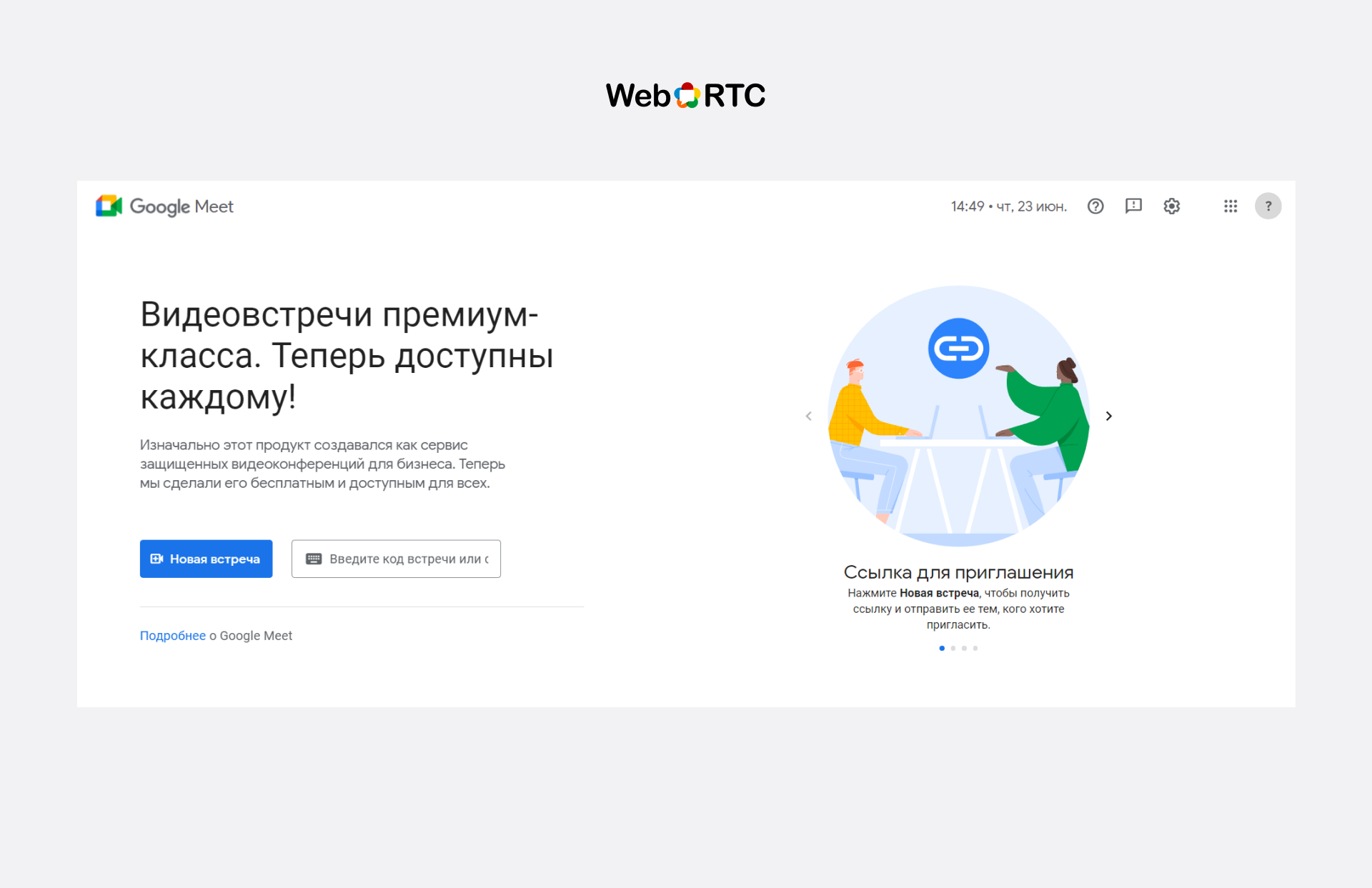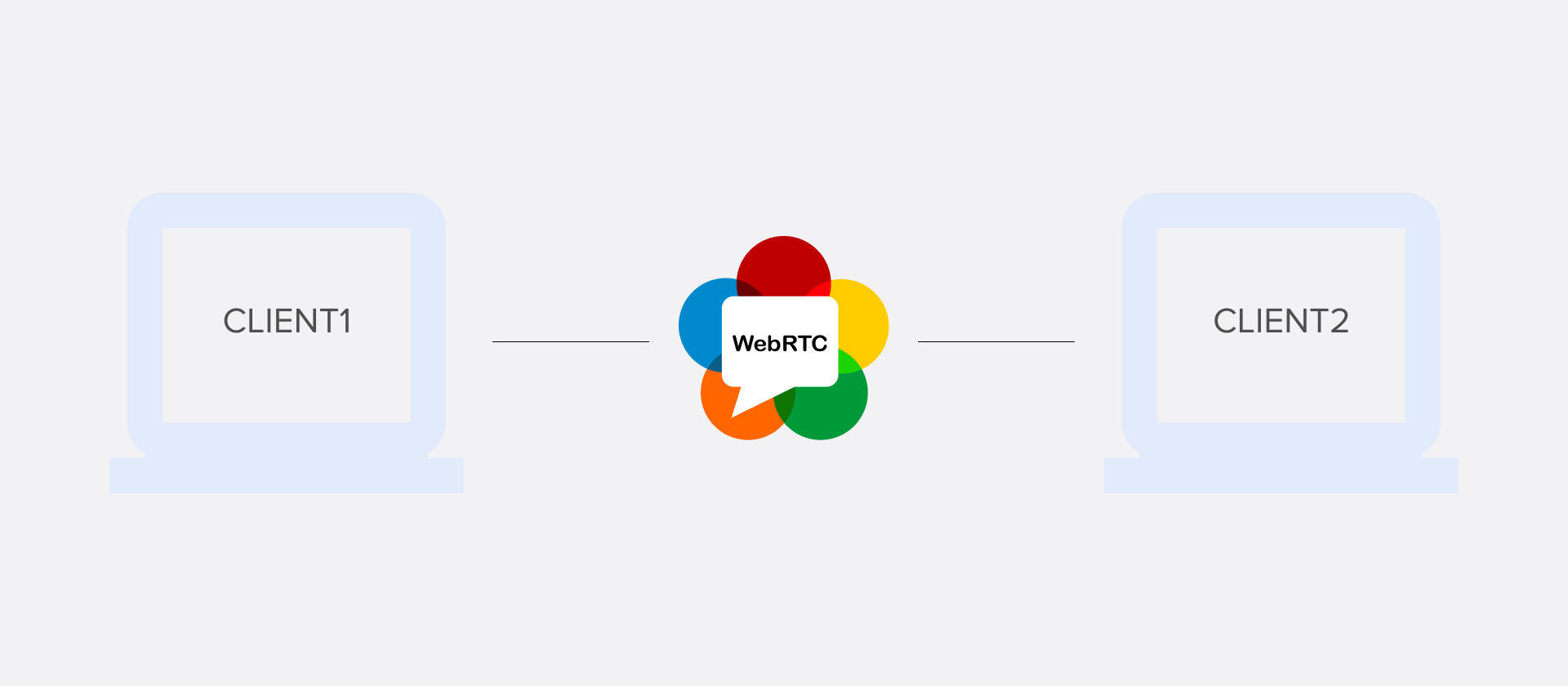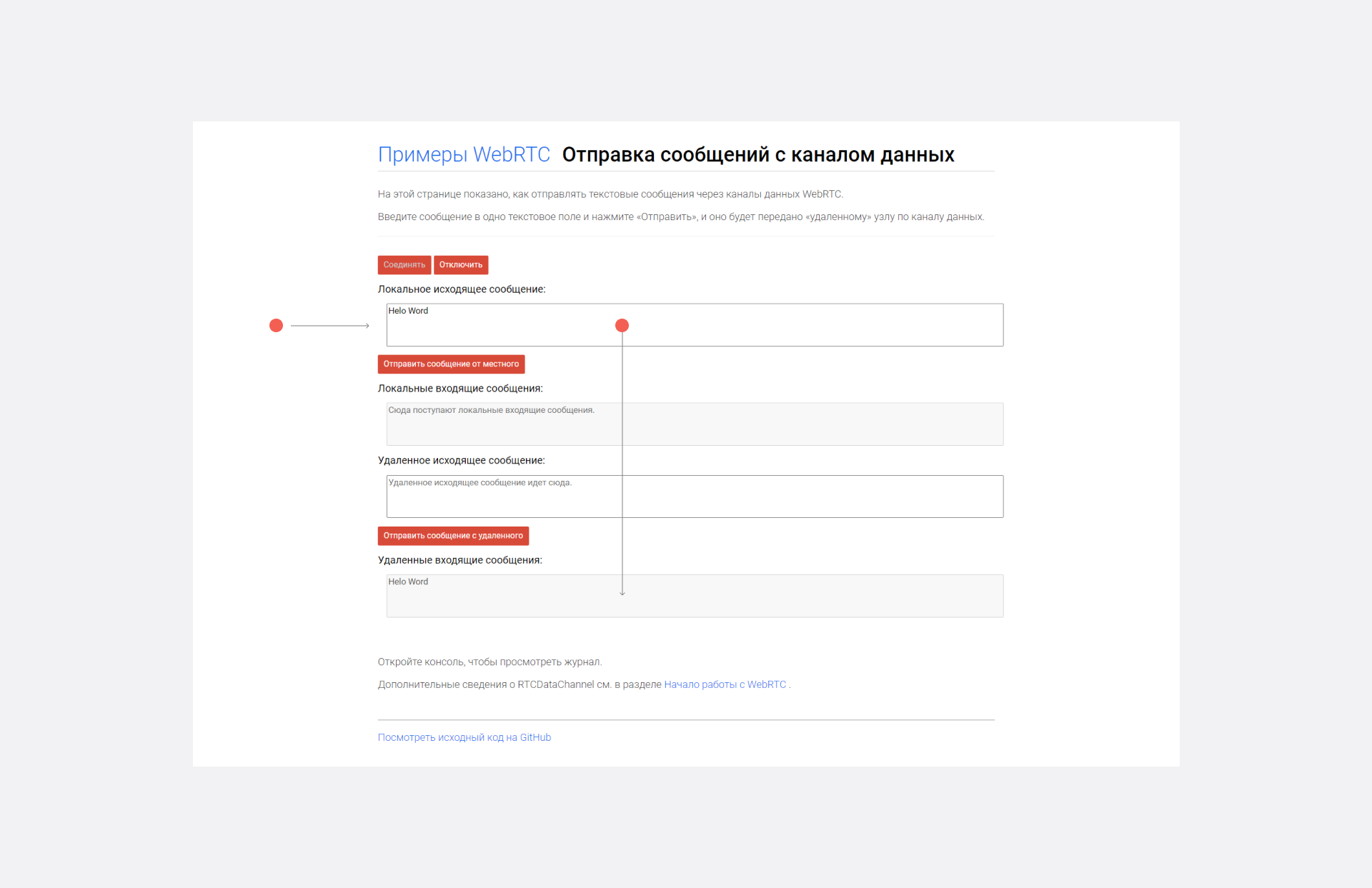
WEBRTC
WebRTC (Web Real Time Communications) is a standard for streaming audio and video, as well as other content between browsers. Its peculiarity is that there is no need to install software or a plug-in. This is a technology that allows you to organize online meetings with anyone, regardless of whether they have a special application, as well as what browser and device they use.
WebRTC is the basis of Google Meet, as well as less popular but also cool projects like Jitsi Meet and BigBlueButton, which are focused on corporate and educational video conferencing, respectively. Jitsi Meet doesn't even have a client program, but it's open source so that anyone can write it for their own purposes. This is a great example of what can be done with this technology without too much effort.
WebRTC technology operates according to fairly simple rules. After the user opens a page with the content of this protocol and agrees to allow the browser to access the webcam and microphone, if necessary, the following actions are launched:
- The caller's browser generates an SDP packet, a text file with data on codecs, file types, and other connection parameters;
- The file is sent to other conference participants via the signaling server and WebSocket protocol or in another way convenient for developers;
- The browser of the person answering the call generates its own SDP packet based on the data from the received one and sends it to the first one;
- At the same time, the service analyzes the network connection of all participants - it passes them the address of the STUN server, which determines the IP address of the device, or uses a more complex scheme.
Successful data exchange is considered a sufficient condition for establishing a connection. During the conversation, the system will periodically check the relevance of the information in the background. This is to protect the connection and also to quickly reconnect if someone experiences network problems.
WebRTC works only over the secure HTTPS protocol and requires the website to have a corresponding certificate. Additionally, DTLS and SRTP encryption ensures the security of data exchange.
WebRTC uses up-to-date versions of video and audio codecs that can adapt to connection conditions without changing the stream quality. Plus, you'll have an integrated communication enhancement system with echo cancellation and noise reduction. And the option to control the microphone sensitivity for each participant.
WebRTC applications are universal because they work in the browser environment. You won't need to spend time and money on developing different versions for desktop and mobile users, as long as your project works in popular browsers.
Your developers won't need to write all the basic tools, such as screen capture, but if they want to add something unique, it will be quite easy to do thanks to the free license and detailed documentation.
You can use WebRTC the way your project needs it. Your developers will be able to use JavaScript libraries and APIs of cloud services that support the standard to add video communication support in the form you need. At the same time, you will decide how the control interface should look like, rather than having to adapt it to the specific requirements of other protocols.
WebRTC is the most popular video communication protocol after Zoom. It is slightly less functional, but it protects user data much better and is distributed under a free license. If you want to add video communication capabilities to your web application, the easiest, most convenient, and cost-effective way to do it is to use WebRTC.


